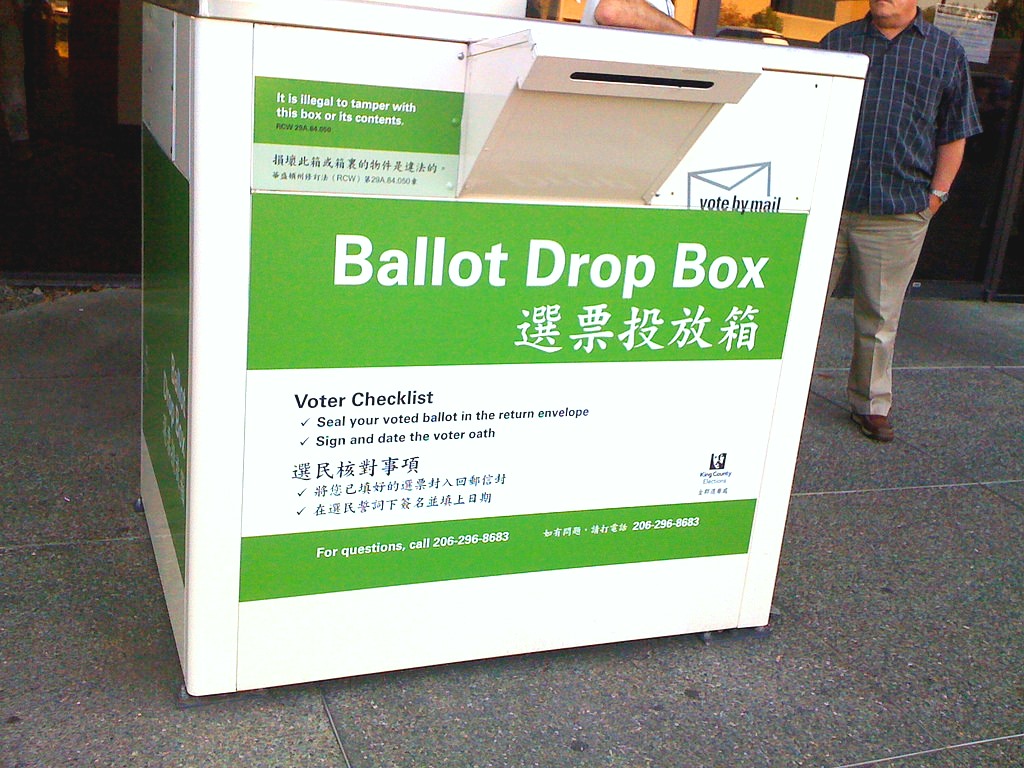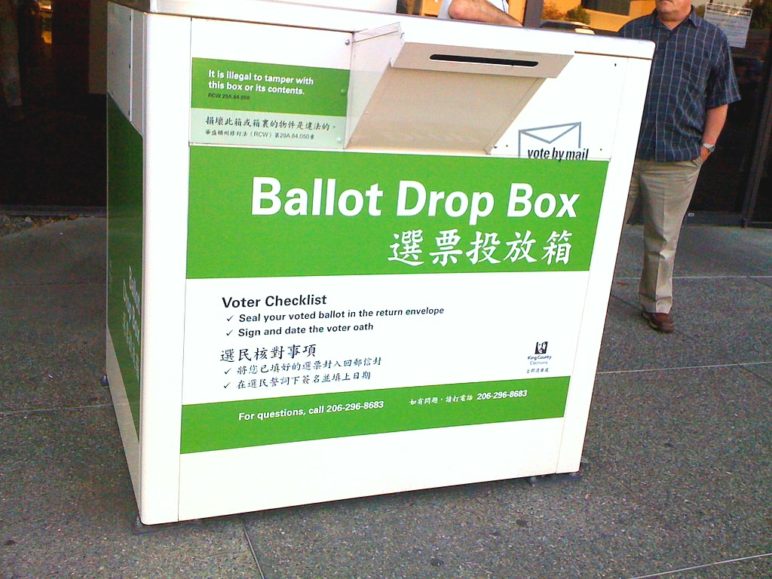UPDATE, June 2, 2017: Illinois became the first state to pass Automatic Voter Registration using agencies other than the Department of Motor Vehicles. Designated agencies in Ilinois include the Department of Healthcare and Family Services and the Department of Employment Security. The bill, passed with strong bipartisan support, could serve as a model for Washington to take a similar multi-agency approach.
Oregon’s New Motor Voter law empowered more than a quarter-million voters in its first nine months. Six states plus Washington, DC, are now implementing automatic voter registration, including Alaska, which approved it by a landslide in November. Evergreen State readers may be wondering: What about Washington? Can’t we do that, too? Yes. But it’s complicated.
More than 1 million eligible voters aren’t registered
The number of voting-age Washingtonians who are not registered to vote has grown steadily in the past few decades. Although more voters registered in 2016, nearly 1.3 million voting-age adults in Washington remain unregistered. Adding them to voter rolls once they prove their citizenship would ensure they receive mail-in ballots and can vote in future elections. Most registered voters cast ballots only some of the time, which is their choice. When Oregon introduced its automatic registration system this year, about a quarter of the automatically registered newcomers to the rolls cast ballots in November’s US election.

Original Sightline Institute graphic, available under our free use policy.
Options for automatically registering voters in Washington
Oregon and other states with automatic voter registration are registering citizens who document their citizenship to receive a driver license or ID card. Washington is unusual among states. It does not require documentation of legal presence in the United States to get a standard driver license or ID card, although it does offer an enhanced driver license and ID. To get those, which residents will need starting in early 2018 to take domestic flights (unless they want to carry passports to the airport every time they fly), residents have to prove citizenship. Because only a small share of licensed drivers have chosen to get enhanced licenses and IDs, advocates and legislators have considered using other agencies that verify citizenship, such as the the Economic Services Administration and the Health Benefit Exchange, to automatically register people to vote.
How many unregistered citizens could each of these agencies register, if a state Automatic Voter Registration law cleared the legislature or won approval at the ballot?
Economic Services Administration
In 2016, the Economic Services Administration (ESA) served 797,521 adult clients whose citizenship the agency verified. If these citizens are registered to vote at the average rate in Washington—77 percent of voting-age Washingtonians are registered—then ESA could automatically register 183,500 people to vote. If ESA citizen clients are registered to vote at less than average rates—say, the same rate as Washingtonians without a high school education, or 59 percent—the agency could automatically register 327,000 people, or about one-quarter of all unregistered but eligible voters in the state.
Health Care Authority
Currently, 800,000 adults are enrolled in Washington Apple Health (Medicaid). According to the Health Care Authority, 82 percent of enrollees are citizens. If these 660,000 enrolled citizens are registered to vote at the average rate, the Authority could automatically register more than 150,000 people to vote. However, some Apple Care enrollees are also ESA clients and Apple Health enrollees, so the potential number of enrollees can’t be simply added together.
Health Benefit Exchange
In 2017, some 182,000 Washingtonians enrolled in Qualified Health Plans through the Washington Health Benefit Exchange (the Affordable Care Act marketplace). More than 150,000 are adult citizens. If these are registered to vote at average rates, the Exchange could automatically register 35,000 people to vote.
Department of Licensing
More than 5.5 million Washingtonians have standard licenses or IDs, and as of March 2017, 609,000 Washingtonians had opted to pay $54 more to receive an enhanced ID card or driver license. (The extra price will drop to $24 this year, because of new legislation just approved.) The Department of Licensing could only automatically register to vote those people with an enhanced license or ID, because they are the only ones who have verified their citizenship. If they are registered at the average rate, the Department of Licensing would automatically register 140,000 people to vote. Again, there may be overlap with the other agencies.
However, many more Washington citizens will probably start choosing enhanced IDs, because standard licenses and IDs do not comply with the federal REAL ID Act. Secure federal facilities no longer accept standard Washington licenses and IDs as identification and, starting on January 22, 2018, Washingtonians will not be allowed to use standard licenses or IDs to board domestic flights. Starting in 2018, the Department of Licensing will begin marking standard licenses and IDs with language—maybe “Federal Limitations Apply”—to indicate they don’t comply with the federal law.
Let’s say an additional 200,000 Washingtonians get enhanced licenses and IDs by the end of 2018, for a total of 809,000, and those citizens are registered to vote at average rates (77 percent). The Department would automatically register 186,000 voters by the end of 2018. Let’s say that, as new licensees choose the enhanced option, or as standard licenses come up for renewal, or as they figure out their standard licenses don’t work at the airport, almost one-third of the 1.4 million Washingtonians getting a new or renewed license or ID each year, or an additional 500,000 people, get enhanced licenses or IDs each year for the next eight years. Using the same assumptions as above, the Department would automatically register an additional 115,000 people each year.
Putting it all together
What if Washington approved an Automatic Voter Registration law that took effect in 2018 and ordered the three agencies above to automatically register citizens to vote? If we conservatively assume that, including overlapping registrations, ESA and the Health Authority together register 180,000 citizens, the Health Benefit Exchange registers an additional 35,000, and Department of Licensing an additional 185,000, altogether 400,000 voters would be added to the rolls in 2018. If the Department of Licensing continued registering an additional 115,000 people each year, even assuming the state’s population grows at a rate of one percent per year, by the end of 2025, 90 percent of eligible voters would be registered to vote, up from 77 percent today.
Put another way, AVR would add more than 1.2 million voters to the rolls over the course of eight years. The chart below shows this hypothetical case.

Original Sightline Institute graphic, available under our free use policy.
The above is just one possible path. It could be that Washingtonians will stampede to adopt enhanced licenses and IDs faster, or it could be that the additional $24 for a six-year license will dampen uptake and slow the rate of voter registration.
Conclusion
The Washington legislature could expand its track record of honoring citizens’ right to vote. By passing an Automatic Voter Registration Law requiring the Department of Licensing to automatically register to vote all documented citizens, Washington could clear an unnecessary obstacle from the paths of some of the more than one million Washingtonians who are eligible to vote.
Thanks very much to Dave Kershner for tenaciously researching the numbers for this article.










Comments